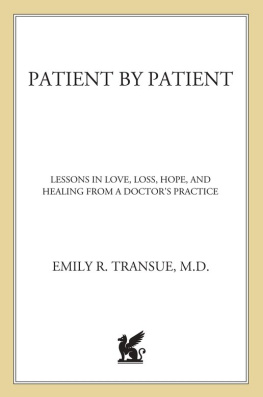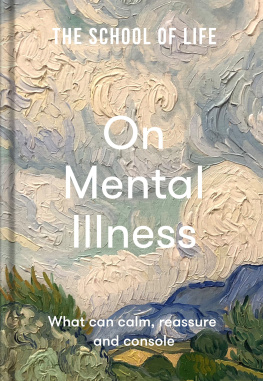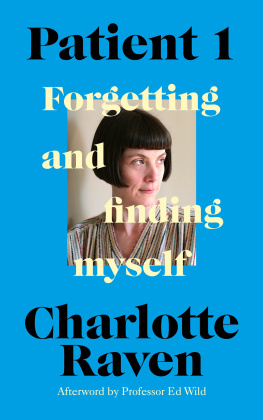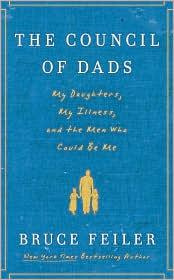
Copyright 2013 by Louise Aronson
All rights reserved. No part of this book may be used or reproduced in any manner whatsoever without written permission from the publisher except in the case of brief quotations embodied in critical articles or reviews.
For information address Bloomsbury USA, 175 Fifth Avenue,
New York, NY 10010.
Published by Bloomsbury USA, New York
Library of Congress Cataloging-in-Publication Data
Aronson, Louise.
A history of the present illness : stories / Louise Aronson. 1st U.S. ed.
p. cm.
eISBN: 978-1-62040-008-1
1. Medical fiction, American. 2. Physician and patient Fiction
3. San Francisco (Calif.)Fiction. I. Title.
PS3601.R67H57 2013
813'.6dc23
2012018354
First U.S. edition 2013
Electronic edition published in January 2013
www.bloomsbury.com
TO MY PATIENTS
FOR JANE
If you dont care for obscenity,
you dont care for the truth.
TIM OBRIEN, HOW TO TELL A TRUE WAR STORY
Contents
1. JIAO
She lies in bed the way a letter lies in its envelope. Her eyes are blank and her mouth is open. The image appears to be black and white.
2. QUINGSHAN
He waits in an armchair by the main entrance dressed in a thick brown suit, a blue plaid cap in his left hand and a battered silver-tipped cane between his legs. The chairbeige vinyl, a two-inch slash in the upper-left corneris meant to frame him, but hes too tall, too robust; his shoulders exceed the backrest; his legs stretch out on the mosaic floor across an ocher diamond and well into the adjacent roseate square. Each time the scarred double doors of the main entrance open, he smiles. Hes waited one hour and forty-five minutes so far. Hes missed lunch. His thighs tingle and his stomach growls, but theres no sign of his son.
3. THE PLACE
Its a collection of sandstone buildings in California Mission style, with red-tiled roofs and a hilltop location coveted with equal fervor by real estate developers and urban preservationists. If you bisected the city of San Francisco on both horizontal and vertical axes and went to that location, you would find yourself gazing at the view shown by this wide-angle shot: greenery stretches top to bottom on the left, and a parking lot for two hundred cars does the same on the right. In life, as in this photograph, a vast and gently sloped front lawn popular with local dog walkers fills much of the foreground. Behind the lawn is a traffic circle and behind that a wide staircase and a wheelchair ramp that bring visitors to a terrace where giant pots of native plants surround the main entrance. A newly paved drive lined by twin rows of sentinel palms connects the eleven buildings above with the security gate and busy street below. But the eco-friendly landscaping and handsome square bell tower notwithstanding, only the most inattentive passerby would mistake this place for a college campus or corporate headquarters. The walls and windows are streaked with grime, and too many of the people, coming and going, wear uniforms.
4. QUALITY TIME
This photo was taken a few hours ago, though it might just as easily have been taken yesterday or last week or last month or last year. In it, Jiao and Quingshan sit in the fenced garden adjacent to Building 7. Although its a warm, sunny morning, Quingshan is perched at the far end of a black metal bench wearing his suit coat and cap and Jiao is beside him in her wheelchair, bundled in blankets and scarves. He visits her seven days a week and stays six hours each day, taking three buses from, and then back to, his studio apartment downtown. Every other Sunday, when his daughter calls by long-distance telephone from her home in another state, he tells her its no problem. What else would I do, he asks, a question for which his daughter has no satisfying answer. And so, each morning at more or less ten oclock, he arrives, rolls his wife outside, wipes her drool, makes sure shes warm, then watches the bees on the bougainvillea or the liquid food dropping through plastic tubing into a body he once lay awake admiring, timing himself to see how long he could hold back before reaching out with a foot, a fingertip, his tongue. Its much like caring for a baby, he explains to his daughter, except without the sweet smells, without the hope.
5. HISTORY
In the late nineteenth century, when the institution opened, its residents were called inmates. The able-bodied majority worked in the kitchens and laundry (women) oras shown in this recently colorized archival photographon maintenance and road-repair crews (men). They also operated a large working farm and provided mending and tailoring services to other inmates, to the paid staff, and, for a small fee, to people in the surrounding neighborhoods of St. Francis Wood, Twin Peaks, and the Inner Sunset. Now there are no able-bodied residents. These days, the average age is seventy-six, and even the crazies dont want to live here. Even the homeless, though they do live here, unofficially and undeniably, inside and out. Look back at snapshot 3. Use a magnifying glass. See the colorful mounds beneath the drooping fronds of the sentinel palms and on the margins of the litter-strewn lawn? If this were videography, youd notice that the mounds move from time to timea bottle raised to eager lips, an ill-defined shape morphing into something vertical and recognizable, standing and stretching before ambling off. But even with a still image you can appreciate how very many mounds there are, curled under bushes and burrowed in heaps of trash on the extensive grounds the city doesnt have money to maintain.
6. CHARLES
Quingshan and Jiaos oldest son arrives two hours late and doesnt apologize. The camera captures the exact moment when his left hand, with its manicured fingernails and thick gold wedding band, touches down on the sleeve of his fathers coat. The only moment it touches down.
Hes the piece that doesnt belong, standing in the institutions ancient foyer in his silk suit with his sixty-dollar haircut and limited-edition platinum watch. Sesame Street! his made-in-America daughter would shout, delighted, but he doesnt bring her here.
7. CONTEXT
From the street outside, theres a loud pop. The telephoto lens zooms in on a boy facedown on the sidewalk. This image actually is black and white: white cement, black boy.
8. FAMILY MEETING
A group of professionals, all women, three brown and two white, gather in Jiaos room. Quingshan stands by the door, his head pressed against the sun-warmed wall, his discount-store loafers firmly planted on the speckled linoleum. From beneath half-lowered lids, he watches Charles with the doctor and nurses and social worker, watches as his son charms and instructs them. He himself does not speak. Theres so much he might say in his language or under different circumstances, but nothing that can be said here.
9. THE DOCTOR
She steals a glance at her watch while explaining to Charles how sometimes families choose to forgo treatments such as resuscitation and hospitalization, and sometimes even X-rays and blood draws and antibiotics, everything but that which increases the patients comfort. And then, fingering the name badge that hangs from her neck like a long, gaudy necklace, a faded photograph on the flip side of the plastic sleeve, she explains how such decisions are not only perfectly legal but ethical and moral as well, based as they are on respect and compassion for the afflicted loved one. The doctors slim, stylish watch is secured with a tiny piece of duct tape and her shoes need reheeling, but if she saw this photograph, she wouldnt focus the way most women her age would on the physical indignities of her middle decades: the lips in need of lipstick, the crimped skin forming vertical lines between her brows and furrows around her lips, a body now more attractive clothed than naked. No. This doctor would see only the photograph within the photograph, the years-ago Hawaiian holiday shot of her children from the days when there were three of them, not only her now-teenage baby girl and collegiate boy, but also an oldest child, her firstborn, the lost child who taught her everything she knows about respect and compassion.
Next page






